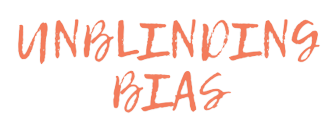In today’s rapidly evolving workplace landscape, organizations are increasingly recognizing the importance of fostering inclusive environments that value diversity and promote employee well-being. While overt forms of workplace bullying are widely acknowledged, there is another insidious form that often goes unnoticed: unconscious bullying. In this article, we will delve into the concept of unconscious bullying, shed light on its impact on individuals and teams, and provide actionable strategies to identify and address this hidden issue in the workplace.
Understanding Unconscious Bullying
Unconscious bullying refers to behaviors, actions, or remarks that unintentionally harm, marginalize, or discriminate against others. It stems from deep-seated biases, stereotypes, and societal conditioning that shape our perceptions and interactions. Unlike overt bullying, unconscious bullying occurs without the perpetrator being aware of the harm they are causing, making it all the more challenging to address.
The Impact of Unconscious Bullying
Although unconscious bullying may be unintentional, its impact on individuals and the overall work environment can be significant. The effects of unconscious bullying can include diminished self-esteem, increased stress levels, decreased productivity, and damaged relationships. Over time, these negative outcomes can create a toxic work culture that hinders collaboration, stifles creativity, and erodes employee morale.
Recognizing Unconscious Bullying
Identifying unconscious bullying can be complex, as it often manifests in subtle and indirect ways. However, developing an awareness of common signs can help individuals and organizations address this issue effectively.
Here are key indicators to watch for:
Microaggressions:
Microaggressions are brief, everyday actions or comments that convey derogatory or demeaning messages towards individuals or groups. These can include dismissive remarks, subtle biases, or nonverbal cues that perpetuate harmful stereotypes.Exclusionary Practices:
Unconscious bullying may involve exclusionary practices, where individuals are consistently left out of important discussions, decisions, or social activities. This exclusion can lead to feelings of isolation, reduced job satisfaction, and hindered career progression.Unequal Distribution of Opportunities:
Unconscious biases can influence the allocation of resources, opportunities, or promotions, resulting in disparities among employees. This unequal distribution can contribute to a sense of injustice, negatively impacting motivation, engagement, and overall team dynamics.
Addressing Unconscious Bullying
To foster a workplace culture that upholds respect, inclusivity, and psychological safety, organizations and individuals must take proactive steps to address unconscious bullying.
Here are actionable strategies to create a healthier work environment:
Promote Awareness and Education
Organizations should invest in awareness campaigns and training programs that educate employees about unconscious bias, its impact, and strategies to mitigate it. By fostering awareness, individuals can identify their own biases and work towards overcoming them.Encourage Open Dialogue:
Establishing open lines of communication is crucial for addressing unconscious bullying. Encourage employees to speak up if they feel marginalized or witness behaviors that may perpetuate bias. This open dialogue fosters a culture of trust, enabling individuals to address issues promptly and constructively.Foster Diversity and Inclusion:
Create a culture that embraces diversity and inclusion as core values. This can be achieved by implementing policies that ensure fair and equitable treatment for all employees, establishing diverse hiring practices, and creating opportunities for employees from underrepresented groups to contribute and grow.Provide Implicit Bias Training:
Offer training programs specifically focused on implicit bias. These sessions can raise awareness of biases and provide strategies to challenge and overcome them. Incorporate interactive exercises and case studies to help individuals understand the impact of their actions and words.Lead by Example:
Leaders play a crucial role in setting the tone for the workplace. By modeling inclusive behavior, addressing unconscious bias
